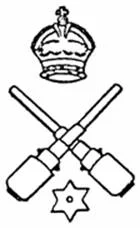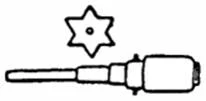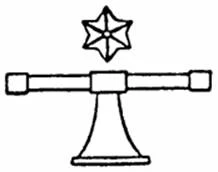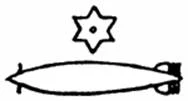 |
| View of Imperial Transport at the Elderslie Drydocks in Glasgow during the joining of the new fore section to the after section that survived the torpedoing. |
MV Imperial Transport was an oil tanker built in the early
1930s for the Houlder Line. During World War II, the ship was torpedoed by a German
submarine in early 1940 and broke in half. The stern section was saved and a
new forward half was built and mated to the ship, which returned to service in
1941. Imperial Transport was torpedoed again in early 1942, but her crew was
able to get her back to port. She was repaired in the United States and was
back in service by early 1943. The ship was sold to a Norwegian company in
1947, sold again two years later and finally scrapped, in 1958.
Imperial Transport was an 8,022-gross register ton (GRT) oil
tanker. She had a net tonnage of 4,830 and a length between perpendiculars of
459 feet 7 inches (140.1 m). The ship had a beam of 60 feet (18.3 m) and a
draught of 27 feet 11 inches (8.5 m). She was powered by a pair of four-stroke,
eight-cylinder, diesel engines, built by the Northeastern Marine Engineering
Co. with a total power of 633 nominal horsepower.
Imperial Transport was completed in 1931 for the Houlder
Line. On 11 February 1940, the ship was steaming without a cargo, bound for
Trinidad, when she was torpedoed by the German submarine U-53. The ship broke
in half about five minutes after the impact and the crew abandoned ship (two
drowning in the process). Part of the crew re-boarded the stern later that
night and the rest of the crew followed. After waiting for the weather to
moderate, they got underway again on 13 February and encountered four British
destroyers late on the 14th. HMS Kingston was tasked to screen the tanker as
she headed for port. The weather deteriorated on the morning of the 15th and
the tanker could not make any headway. An attempt to rig a tow by the destroyer
failed and she took off the crew during the night. A tugboat and the destroyer
Forester arrived, but the weather was too bad to re-board the stern section and
Forester took the crew to Scapa Flow. Two more tugs were needed before the
stern section could be towed to the Firth of Clyde and beached on the Isle of
Bute on 26 February.
The stern section was later moved to Barclay Curle's
dockyard at Elderslie where the damaged portions of the hull were trimmed away.
A new forward half was built at Port Glasgow by William Hamilton and Company
and mated to the stern section in 1941. The tanker returned to service in June.
Imperial Transport was assigned to Convoy ON 77 when she was
torpedoed by U-94 on the morning of 25 March 1942. The two torpedoes disabled
the engines and steering gear and caused massive flooding. The crew abandoned
ship and was picked up by the French corvette Aconit, but a skeleton crew went
back aboard that evening and unsuccessfully tried restart the engines. They
returned the following day and managed to pump out some of her flooded
compartments and get underway. The ship arrived at St. John's on 30 March where
she received temporary repairs. Imperial Transport left St. John's on 24 August
for New York and arrived on 5 September. She was repaired at Hoboken, New
Jersey by Todd Shipbuilding & Drydock Co. and returned to service in
February 1943 with a new spar deck installed for additional deck cargo.
The ship was sold to Victor Jenssens Rederi A/S of Oslo,
Norway in 1947 and renamed Mesna. She was then sold to Skibs-A/S Agnes of
Mandal two years later and renamed Rona. The ship was broken up in Hamburg,
West Germany, in December 1958.
Name: Imperial Transport
Owner: Houlder Line
Port of registry:
United Kingdom, Glasgow
Builder: Blythswood Shipbuilding Co., Glasgow
Launched: 17 February 1931
Completed: 1931
Identification:
UK Official number: 162620
Code letters: GMRB
Fate: Sold to Victor Jenssens Rederi A/S, 1947
Name: Imperial Transport
Owner: Victor Jenssens Rederi A/S
Operator: Simonsen & Astrup
Port of registry:
Norway, Oslo
Acquired: 1947
Renamed: Mesna
Fate: Sold to Skibs-A/S Agnes, 1949
Name: Mesna
Owner: Skibs-A/S Agnes
Operator: Einar Saanum
Port of registry:
Norway, Mandal
Acquired: 1949
Renamed: Rona
Fate: Scrapped, December 1958
Type: Oil tanker
Tonnage:
8,022 GRT
4,830 NT
Length: 459 ft 7 in (140.1 m)
Beam: 60 ft (18.3 m)
Draught: 27 ft 11 in (8.5 m)
Depth: 34 ft 5 in (10.5 m)
Decks: 2
Installed power: 2 × diesel engines (633 nhp)
Propulsion: 1 × screw
 |
| MV Imperial Transport. |
 |
| MV Imperial Transport. |
 |
| Just one day after leaving her home base in Scapa Flow, the MV Imperial Transport was struck by a U-boat–launched torpedo, causing catastrophic damage that cleaved the ship in two. The rear half of the tanker made it 130 miles under her own power before being towed the rest of the way to Kilchattan Bay, on the Isle of Bute, where a new bow was constructed. |
 |
| Just one day after leaving her home base in Scapa Flow, the MV Imperial Transport was struck by a U-boat–launched torpedo, causing catastrophic damage that cleaved the ship in two. The rear half of the tanker made it 130 miles under her own power before being towed the rest of the way to Kilchattan Bay, on the Isle of Bute, where a new bow was constructed. |
 |
| The newly built forward half of the oil tanker MV Imperial Transport being towed down the Clyde in 1941, just six months after she was struck by a torpedo from U-53. |
 |
| Merchant Navy Captain Walter Smail was injured by flying debris during the 11 February 1940 torpedo strike on the MV Imperial Transport, but he managed to save most of his crew and steam two-thirds of his ship 130 miles before they were rescued by four British destroyers and towed the rest of the way to Kilchattan Bay. |
 |
| This illustration by John Hix, depicting the MV mperial Transport’s stern section, ran in the North Carolina newspaper The Rocky Mountain Telegram on 21 January 1942. It was part of his syndicated column, “Strange as It Seems.” |
 |
| Kapitanleutnant Otto Ites, captain of U-94, was responsible for the second torpedo strike on the MV Imperial Transport. On 25 March 1942, Ites launched four torpedoes at the tanker, and two struck home. Although this time the ship did not cleave in half, she was listing badly to port, causing Captain Smail to give the order to abandon ship. This was still not the end for the Imperial Transport; she was once again repaired and quickly back to transporting oil for the remainder of the war. |












































































